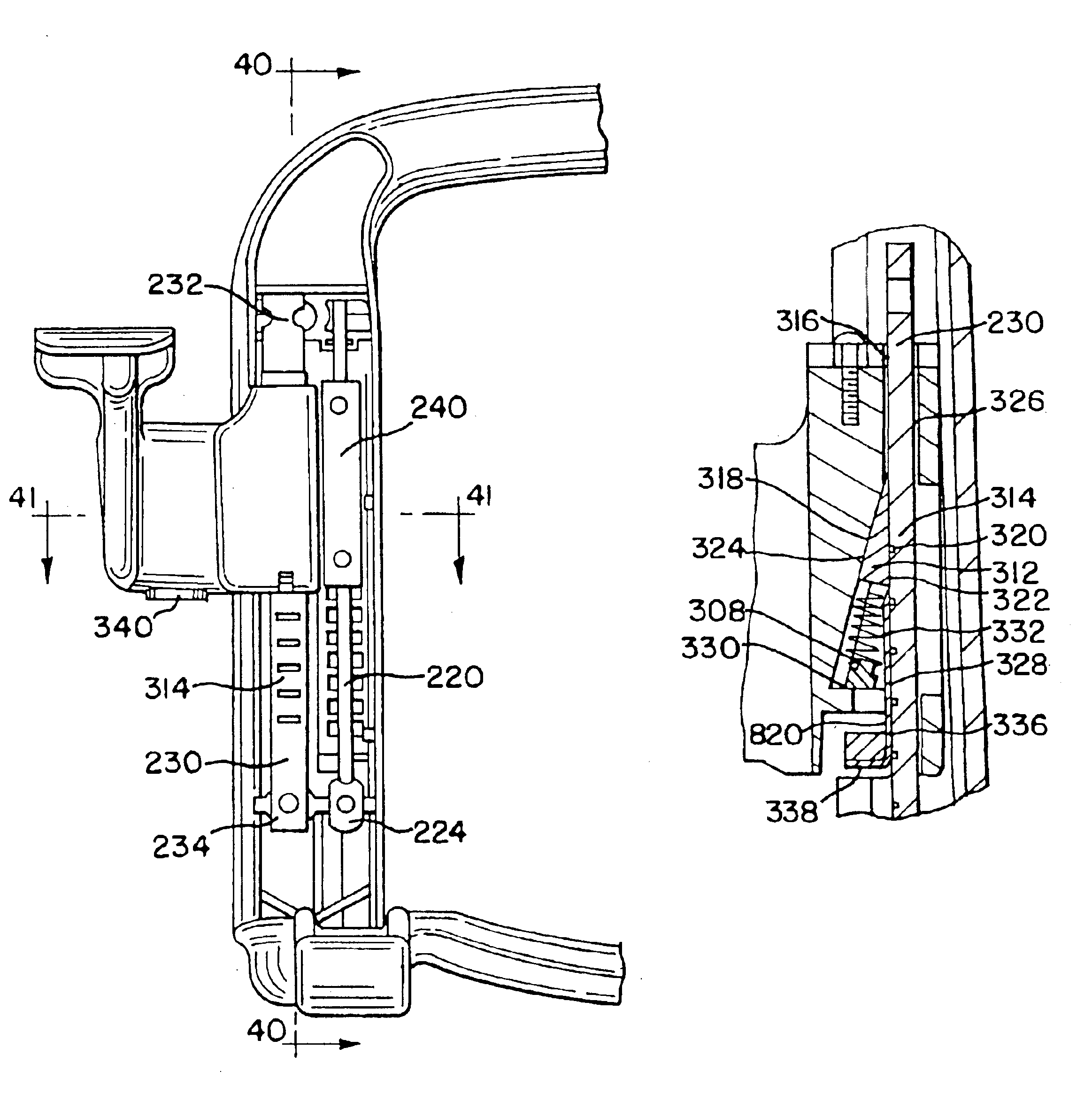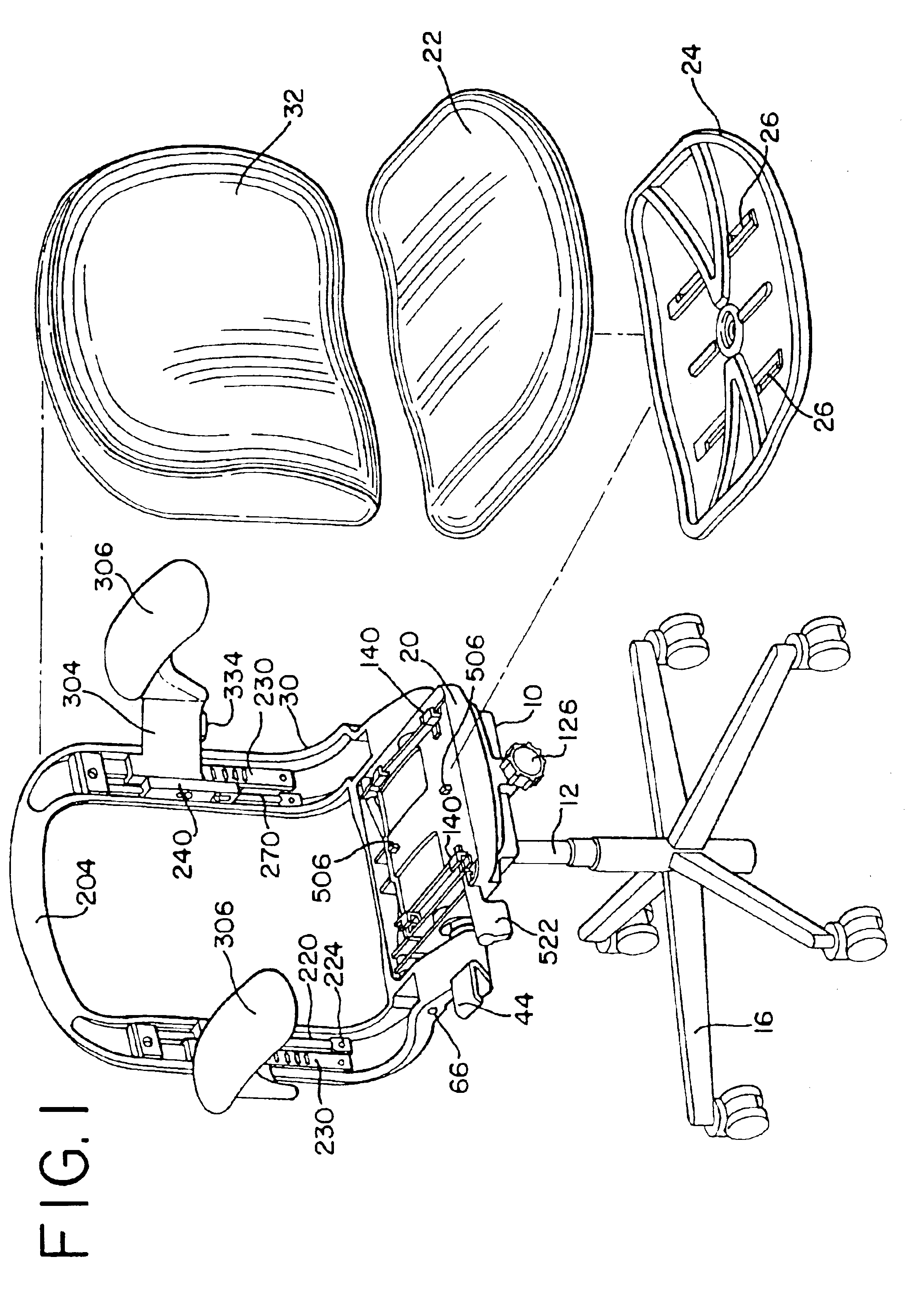Adjustable armrest
a technology of armrests and adjustable seats, which is applied in the direction of rocking chairs, movable seats, chairs, etc., can solve the problems of various limitations of chairs using these types of springs, and uncomfortable shirt pulling of users, etc., to achieve easy and simple adjustment, improve the tilt control mechanism, and reduce the effect of fatigu
- Summary
- Abstract
- Description
- Claims
- Application Information
AI Technical Summary
Benefits of technology
Problems solved by technology
Method used
Image
Examples
Embodiment Construction
The terms “longitudinal” and “lateral” as used herein are intended to indicate the direction of the chair from front to back and from side to side, respectively. Similarly, the terms “front”, “side”, “back”, “forwardly”, “rearwardly”, “upwardly” and “downwardly” as used herein are intended to indicate the various directions and portions of the chair as normally understood when viewed from the perspective of a user sitting in the chair.
Referring to the drawings, FIG. 1 shows a preferred embodiment of the chair having tilt control housing 10, seat support 20, seat cushion 22, back support 30, backrest 32 and seat pan 24. A pneumatically adjustable support column 12 is mounted to a rear portion of the housing at opening 14 as shown in FIGS. 4 and 6. A top portion of the column 12 having an actuation button extends into the housing. As shown in FIGS. 19-21, a pivot member 34 having a forwardly extending arm 36 engaging a stop 40 and a rearwardly extending arm 38 adapted to engage the ac...
PUM
 Login to View More
Login to View More Abstract
Description
Claims
Application Information
 Login to View More
Login to View More - R&D
- Intellectual Property
- Life Sciences
- Materials
- Tech Scout
- Unparalleled Data Quality
- Higher Quality Content
- 60% Fewer Hallucinations
Browse by: Latest US Patents, China's latest patents, Technical Efficacy Thesaurus, Application Domain, Technology Topic, Popular Technical Reports.
© 2025 PatSnap. All rights reserved.Legal|Privacy policy|Modern Slavery Act Transparency Statement|Sitemap|About US| Contact US: help@patsnap.com



